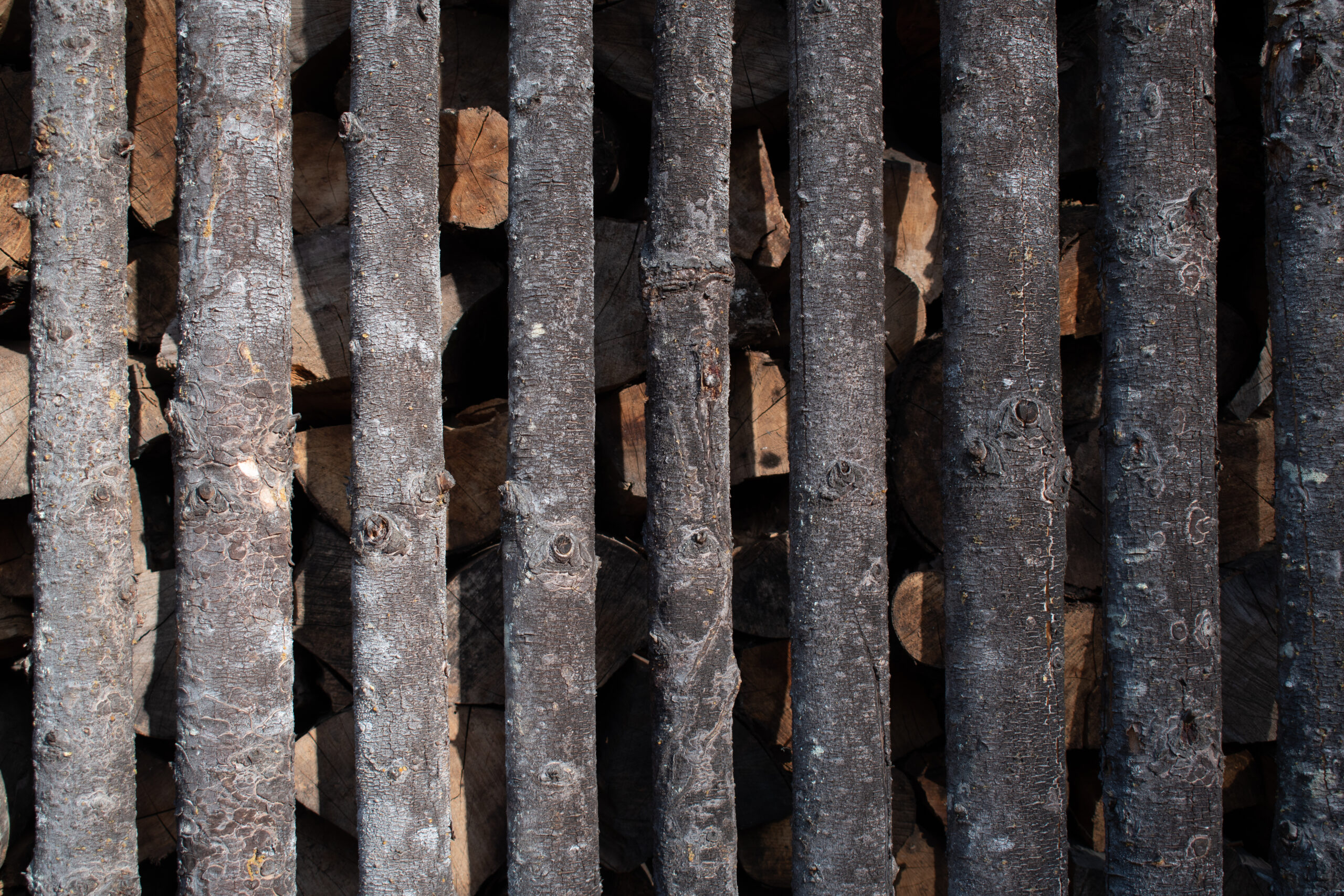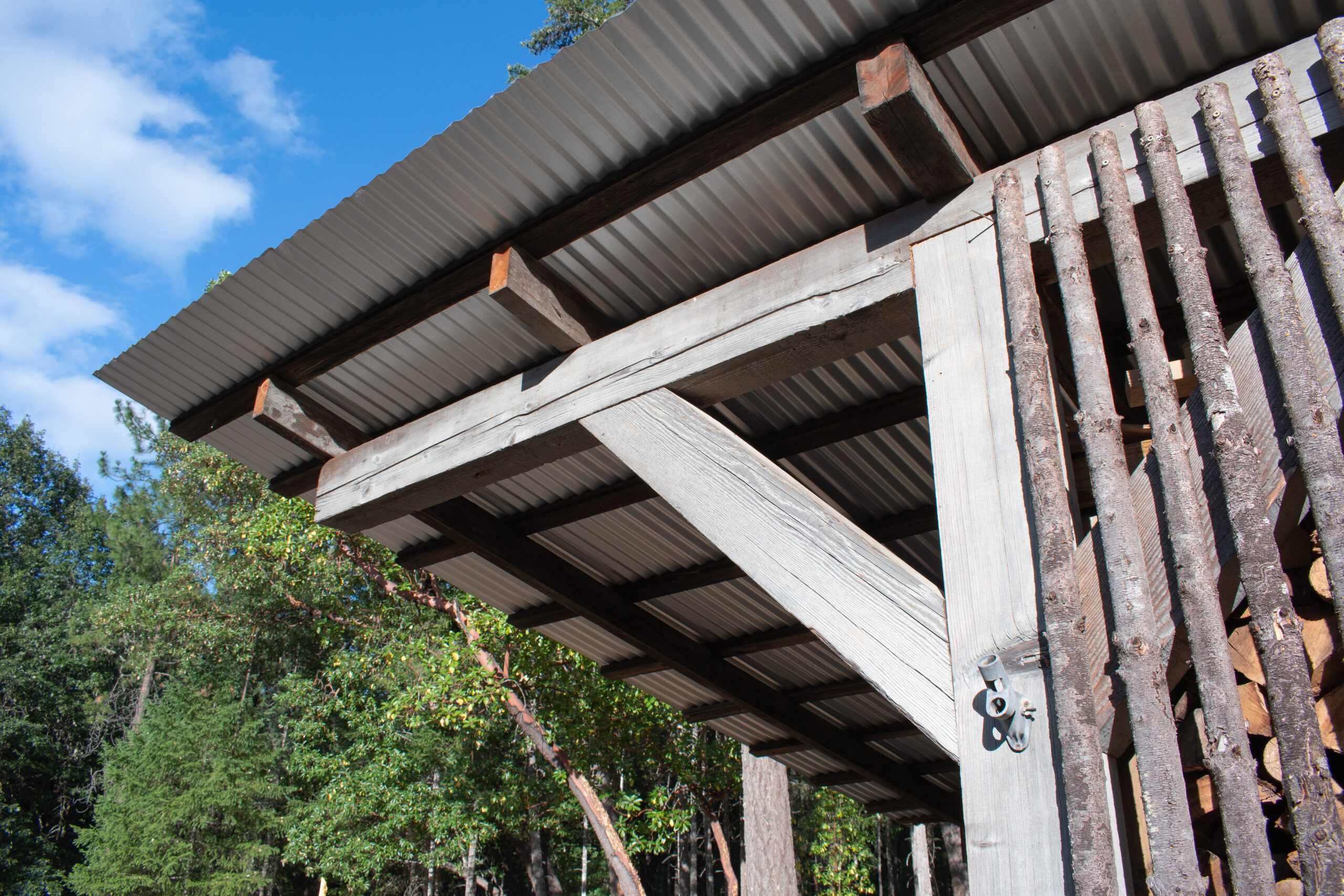Rural woodshed constructed from reclaimed timber and Douglas Fir saplings.


Designed using reclaimed timbers from a decommissioned lumber mill, and clad with Douglas fir poles thinned from the surrounding forest for fire safety, this woodshed for a Dutch-American family blends beautifully into their landscape, a nod to the surrounding forest.

In Architecture school the first sacrament is putting a mark on the page. We are taught to approach the act of drawing with some sanctity. This piety is to prepare us for the first act of building – putting a mark on the earth. For the sake of simplicity we start with nature. An unsullied wild.
As architects with decades of practice we’ve now wrangled a plethora of projects of varying and increasing complexity: towers, tunnels, homes, hostels, restaurants, and retail. The details, and the technologies to achieve them, only thicken the mire you have to navigate to achieve that “design intent.”
The woodsheds presented an opportunity to strip all of that back. To start simply, again. The land needed to be cleared for fire protection. We needed shelters to store and dry the felled material. A roof would require structure, the woodpiles would require enclosure. Pretty simple.
Working with salvaged timber from the dismantled local lumber company sheds, we kept the methods of reassembly honest to the material we had.
As architects we wrestle with layers of technology – to seamlessly waterproof our projects, to swaddle and hide the ugly structure doing the work that supports our heroic cantilevers. If we are honest with ourselves, most of our detailing is a nod to an architecturally siloed history of a long dead modern idealism. The bag of tricks we are left holding (of reveal beads, flush trims, frameless windows, glass-on-glass corners, floating toilets and sinks, hidden joints, with hidden pulls) are now ideologically empty, and effectively a currency of style/taste/status.
We needed an overhang to keep things dry (we have no waterproofing). A 45 degree timber brace supports the beam, probably the same way it did in the barn it came from.
The rainscreen is a visual tidying of the same undergrowth saplings that stood here before.
What is special about these projects is not their ambition, their budget, or even their beauty. These are a chance to leave everything we’ve learned in the bag and go back to the simple beginning of making a mark on the land with the stuff on hand.

